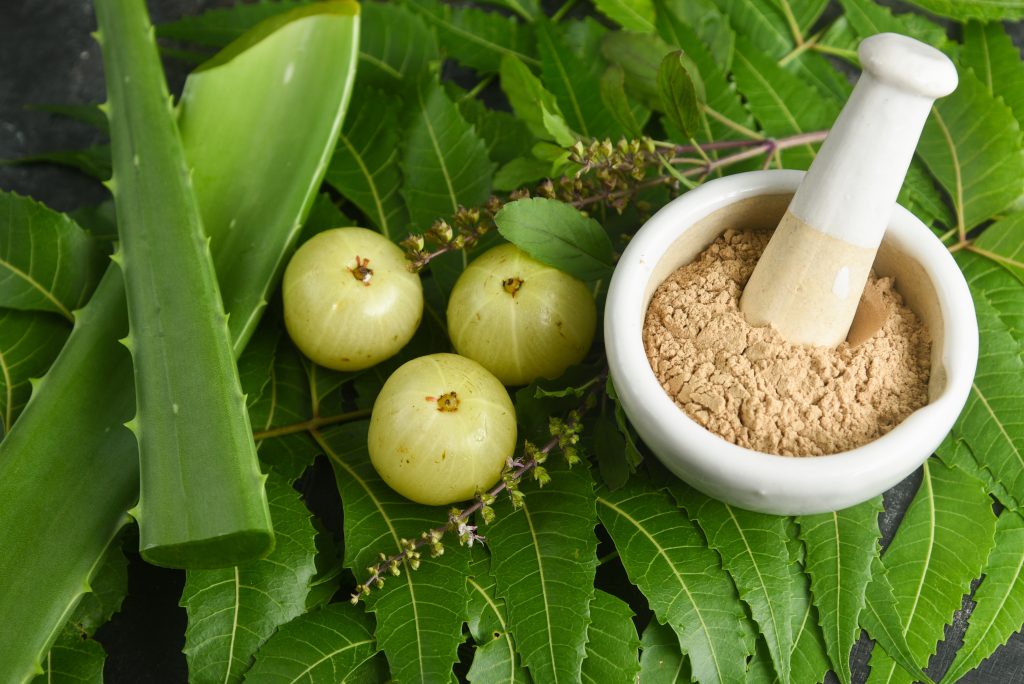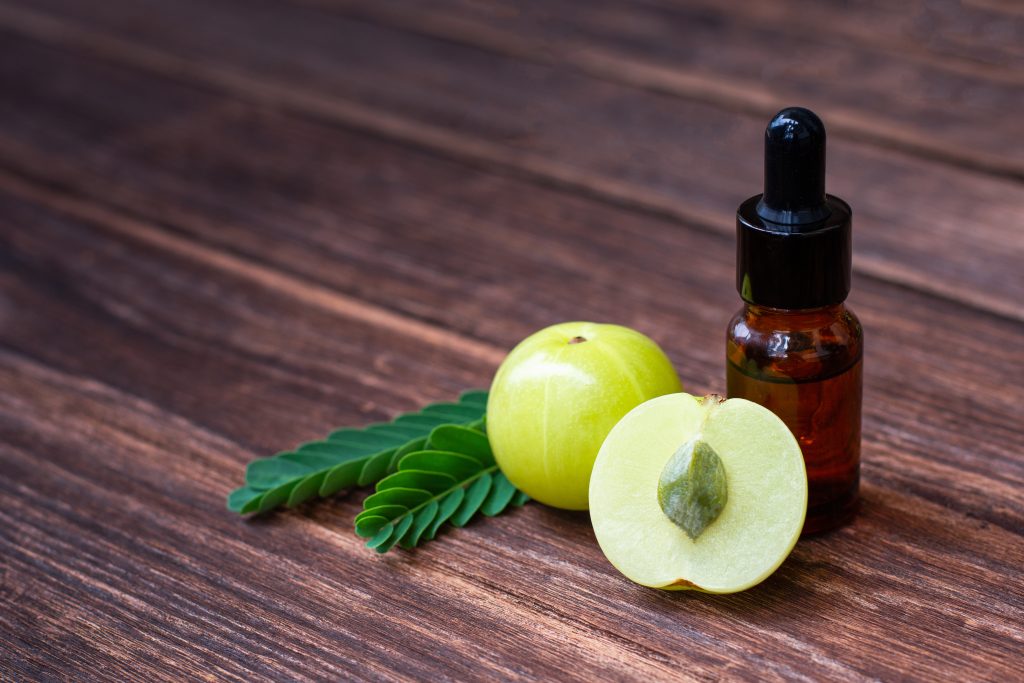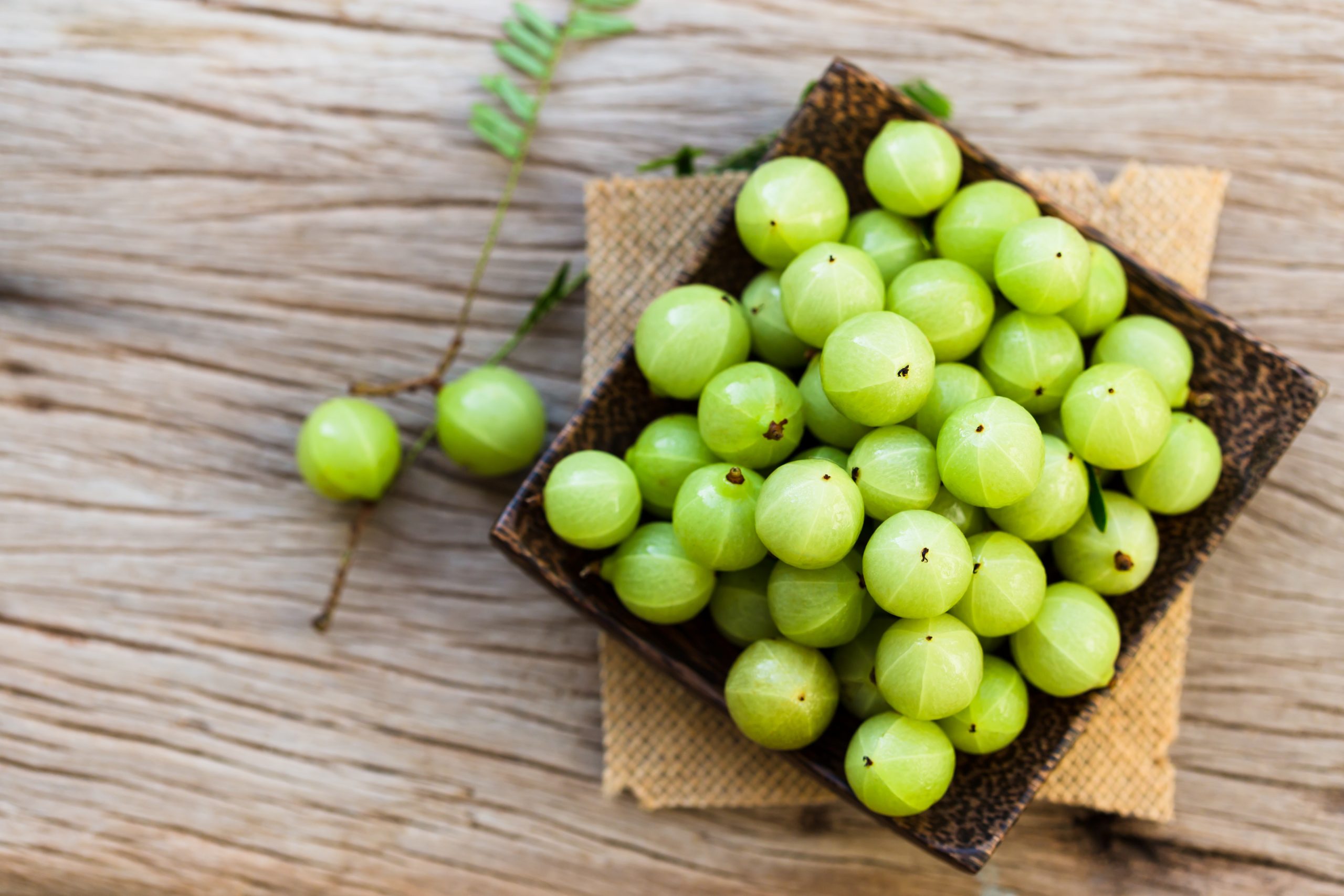Amla, also known as Indian gooseberry, is a fruit that is native to Southern Asia. The berries are known for their sour and astringent flavors, which have made them popular in a wide variety of Indian dishes.
Table of Contents
What is Amla?
Amla (Phyllanthus emblica) is an acidic fruiting plant native to the high mountains of India and Pakistan. Amla fruit is harvested during the wet autumn season in the high-altitude forest areas of the Indian subcontinent. It is traditionally considered a powerful rejuvenator, delaying the aging and degenerative process.
It’s pronounced how it reads, am-luh, and is also known as amalaki and Indian Gooseberry.
Amla fruit looks like a grape but is more spherical than oblong. They’re round and fleshy, and are yellowish-green in color. Amla berries appear to be segmented because of the faint lines they have on them.
The History of Amla
Amla was first cultivated in South Asia, mainly India, Pakistan, and Bangladesh. It’s a berry that has been revered by the Hindus and used in religious ceremonies and rites. The amla tree is considered sacred because it’s believed that god Vishnu dwells in it.
The name amalaki comes from part of Indian architecture known as amalaka. Amalaka is a stone disk with ridges on the rim and is supposed to have been inspired by amla.
Amla also has Ayurvedic importance. According to Ayurveda, Amla has many health benefits, especially concerning age and weight loss.
During World War II, amla powder, candies, and tablets were made from the berry and given to Indian soldiers as a Vitamin C supplement.

What Does Amla Taste Like?
Amla has a sour, bitter taste best described as a mix of green apple, pineapple, and lemon. The flavor can be intense and acidic, so it’s not generally eaten alone. Whether you prefer sweet or sour, you should definitely try this berry.
When cooked, it’s usually added to other dishes so it tastes better and adds more flavor. It loses most of the sourness and bitterness, adding a nice twist to any dish or drink.
How to Tell When Amla is Ripe
When ripe, amla can be of different shades of green and yellow. Some can be neon-green, others have a sort of yellow-golden hue, and some can even be white.
The best way to check is to touch them and make sure they’re a bit tougher than a grape would typically be. Always avoid berries that feel mushy, as they are likely overripe or rotten.
Ripe amla berries shouldn’t be bruised or have an odd shape, their skin should be taut, and they should be completely round and full.
Cooking with Amla
To prepare amla berries, you must soak them in hot water for several hours or overnight, and they’re ready to cook. Before cooking, cut them open to remove the seed from the inside and follow your preferred recipe.
There are many ways to eat and cook amla. You can boil amla in water with turmeric powder and salt and then eat it once it cools down, or you could dry some slices in the sun and eat them when they’re ready.
In India, Amla berries are traditionally made into chutneys and even pickled, but they can be added to just about anything. They’re also an excellent ingredient for smoothies or shakes.

Here are a few of our favorite amla recipes:
Amla Murabba (Amla Berries in Syrup): All you need for this recipe is sugar, amla berries, lime, and lemon juice. Use a more aromatic citrus, like sudachi, to further improve the flavor of this dish. Your sweet tooth will thank you!
Nellikai Thayir Pachadi: This recipe is a homemade favorite and can be served as a side dish or with rice. The possibilities of amla berries are endless.
Neer Nellikai (Pickled Amla Berry): Learn how to make a spicy Indian brine, perfect for amla berries. Not much is needed, just water, berries, asafetida, and turmeric.
How to Store Amla
Amla is typically stored in the form of pickling. If you want to keep amla berries for a long time, you can use a simple brine of turmeric and vinegar.
All you have to do is add either of the ingredients to an airtight container, slightly cut the berries, add them, and leave them to sit for a while. Then leave them in the fridge for as long as you like.
If pickled and kept in airtight containers, amla berries can have a shelf life of one year.
Nutritional Benefits of Amla
Amla berries are great for people’s health, and there are many ways of reaping the effects of amla fruits. There’s organic amla powder, other supplements, and the berries themselves. Its nutrient content has plenty of healthy phenols, flavonoids, tannins, and other antioxidants.
Here are some of the vital health benefits of amla berries:
- Amla helps fight the common cold and improves eyesight.
- It burns fat and helps boost our immune system.
- Amla promotes hair growth and improves our skin.
- It also helps lower blood sugar, helps improve some chronic conditions, and relieves pain.
- These fruits help control the cholesterol in our body, reducing the accumulation of bad cholesterol.
- They also help to improve fertility and vitality.

These berries are known as superfoods worldwide, thanks to the benefits they give us.
They’re used in ayurvedic medicine, which is traditional Indian medicine. It’s a type of medicine based on natural and holistic remedies, combining these products with diet, exercise, and lifestyle to improve one’s mental and physical health.
Amla is one of the most used ayurvedic ingredients and is usually added to many ayurvedic anti-aging medicines, helping to build up lost vigor and vitality. These medicines are used for every part of the plant, tree, and fruit.
Where to Purchase Amla
Peak amla season is from December to April, and you can buy amla supplements and powders online or in a specialty store, such as supplement or herbalist stores. It can be challenging to find amla in regular grocery stores, so farmer’s markets and Indian grocery stores are usually your best bet.

